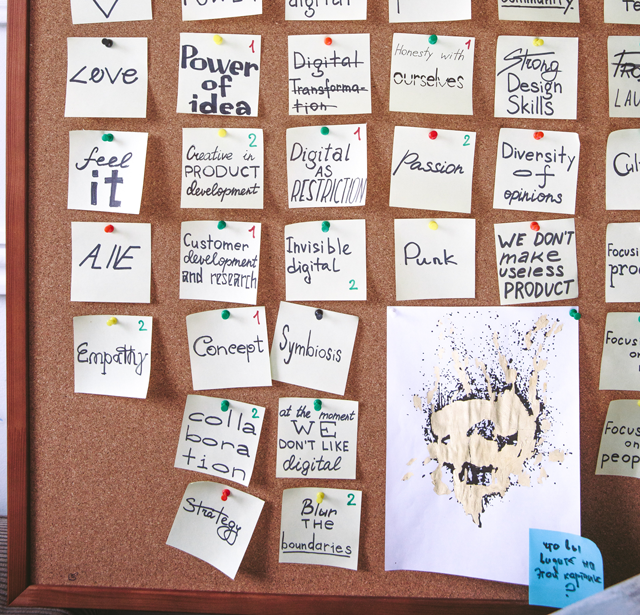 Membership TodaySign Up Now
Membership TodaySign Up NowVideo Transcript:
How to Optimize Your Funnel to take campaign profits to the next level
Justin Sardi: Hey, what’s up everybody, Justin Sardi, CEO and co-founder of TubeSift.com here. And today we have a really awesome guest that I brought on. He’s a buddy of mine from, I think back when I first got started, this is the guy that I would hit up when I’m like, “Hey man, tell me what’s going on with YouTube ads.” So we’ve got Tommie Powers, AKA Tommie Traffic on the call today. And like I said, I’m really stoked. It kind of brings everything full circle because this guy is somebody that he’s been doing YouTube ads longer than pretty much anybody I know, really. This guy’s been in the game for a long time, been behind the scenes, doing all kinds of amazing stuff, work with some huge brands, all that. And yeah, we were chatting the other day. I was like, “Dude has been way too long. Let’s get you on, and yeah, so thanks for coming out, man.”
Tommie Powers: Man. Thanks for having me. I appreciate that intro, man. Thanks.
Justin Sardi: For sure. So today we’re basically going to be talking about scaling campaigns. I know a lot of people have been, a lot of our TubeSift users, things like that, are like, “How do we take it from profitable campaign, spending a couple hundred bucks a day and really get up to two, three, whatever, five grand a day.” And I know like right before I hit the record button, you were talking about your ideal client is spending or the people you’re working with are spending minimum of a couple of grand a day. And so I just kind of wanted to pick your brain on that and get some insights on how you’re getting those campaigns up there, keeping them profitable and all that good stuff.
Tommie Powers: Yeah, for sure, man, let’s get into it. You know what I’m saying? Like a lot of my clients, I would even say, starting out just usually like backend is a key thing that they have in common where they understand that they can make more money on the backend and not so much about the acquisition point. That’s a key thing that obviously we can get into it, but that’s a key thing that I think a lot of people who trying to scale, when I’m having these conversations with them, most of the time that’s one of the big missing elements.
Justin Sardi: They just have a front end or whatever, and then maybe like an upsell or a bump, something like that. But that makes sense. You got to have the higher ticket back end things and really, I guess, know your numbers. What can you actually pay for a customer? And then base your campaigns off of that.

Think about the sales process in the customer journey
Tommie Powers: Even if your high thing is a high ticket on the back end, do you have something that you can sell people over and over again? Which was the key to company like Organify. There are a lot of people know that I work with and help them kind of scale, right? It’s like they’re selling something that people can consume and then they want to buy it again. So we don’t got to make money to get them as a customer. If we get them to buy again, that’s what we really make all of the money at. So if your e-commerce brand is like, how many other products do you have? Like physical product brand, how many other products you have, or even if you digital, do you got a recurring membership? You can go high ticket, you can have coaching on the back end of a digital product or whatever the case may be.
So it’s really thinking about the customer life journey and like how much more can I sell them? And I don’t just sell them. Right. It’s just like how much more value can you create for them? Because then that’s going to indicate your repurchase rate. And I say this a lot in interviews. Well, I haven’t done as many, but I say this a lot, talking to people. Every successful business that I know that has done really well, scaled and been sustainable, is that they get a customer and they sell the most stuff. You know what I’m saying? So it’s the same thing with scaling on the ad side is how can I get them today? Understanding that it’s not about a one time transaction in terms of return on ad spend. It’s really more about getting that customer to buy from me multiple times, where you’re going to really make the real money. And then you can think about your capability to scale completely different.
Justin Sardi: Right. And that completely changes the game basically. So nice. And I feel like a lot of people don’t talk about that enough. Everyone’s concerned about, especially you see all the internet marketing hype, all that kind of stuff, ruins like, we’re profitable on the front end. Obviously everybody wants that, but I’m not calling these not real businesses, but real scalable businesses like you’re talking about, they know their numbers and they’re able to, I think Frank Kern said it or something like that. He’s like, “If you can spend more money to acquire a customer than your competition, you won.”
Tommie Powers: That’s the name of the game right there, man. People do talk about it, but I think, the practical conversations around it, it sounds great, but it’s like, how do you actually do it is what I don’t think people talk enough about. They don’t go enough down the rabbit hole of how to actually pull that off. you can figure out the numbers if you are thinking about your bit, right? Like if you sat down and you thought through, or you looked at somebody, I sold somebody this, and then they bought this and this and this, you can start working them numbers out. But if you don’t really have a concept around how to go about doing that and figuring out your numbers, that’s I think a lot of people don’t talk enough about.
Justin Sardi: Yeah. Right, right. And that’s actually something we’ve been working on, we run like a challenge and we actually used a $47 front end product, but there’s a whole backend built into it, order bump, upsell, recurring subscription for TubeSift. So, I mean, it took us a good six months, running that a few times, to really figure out, I forget the exact number off the top of my head, but like we could spend like 180 bucks to make a $47 sale. Because people are going through these funnels and then we’re profitable like a week later. I’m like, okay. But it doesn’t seem profitable on the front end or even if it’s like a month later with the recurring. Yep. So, yeah, so that’s huge.
Tommie Powers: That’s the mindset right there, man. You just gave them the songs right there.

How to scale your campaigns
Justin Sardi: Right. Right. So for sure. So I guess like another thing a lot of people always ask about is, is there a specific way that you structure your campaigns for scaling? I know a lot of people have different ways they set up their campaigns, like one ad group per campaign. Any tips you can toss out there.
Tommie Powers: Yeah, man, I think it depends on the client. It depends on the project if I’m in a partnership because I got a couple of those too, and it’s really a risk thing. There’s really the way I look at it all is this risk management. So that’s a couple of things in that. We still do run a lot of one ad group per campaign type stuff. So we’ll have one campaign, one ad group, one targeting, one creative. And then if we want to test multiple creatives, then we’ll just keep everything the same. But we just have a different creative. So the targeting would be the same, the settings, all of that would be the same. And then we test different creatives through that. So like as a basic kind of structure predominantly, I mean, there are reasons why we, when we don’t do that, but most of the time we’re running one ad group per campaign, one creative and then kind of going that route.
Now, people who have a larger appetite for risk, it gives you a lot of more freedom to kind of buy data. You know what I’m saying? So we kind of got this two approach to structure as well, where it’s kind of like stack, I call it like the stack method versus the broad method. So for example, what I mean is if they have a large tolerance for data buying, I can run a really broad campaign and run it at $500,000 a day and let that run for a week or two, because I’m just trying to find the opportunities in that. I’m looking for what demographics, placements. If I got a bunch of keywords I dump in there, I might go custom audiences. I can try a bunch of different things and kind of see what’s sticking and then isolate and pull out of it.
Everybody ain’t got the appetite like that, versus the stack method is really just how do I stack a bunch of little campaigns together? So for example, we got our account right now. Maybe we spend seven grand a day. That’s probably, I don’t know, 40 campaigns running right now. We probably launched 200 to get 40, you know what I’m saying? Or maybe even more than that, to be honest, because a lot of times those little campaigns, they don’t really work, but the way that we do it, it’s like a fail fast. It’s kind of going back to my affiliate marketing days. It’s like fail fast. So I would just put a lot of campaigns up with small budgets. And the budget is going to be dependent on your offer. But you need enough data to know if it failed or not.
So for example, if my CPA is 50 bucks and I don’t spend at least $150 on that campaign, then I don’t really know if it failed or not. That’s not enough data for me to know that yet. But so then it’s just like how many little small audience segments can we find? We might go and do one keyword per ad group. You know what I’m saying? We might do one URL for a custom audience type campaign. And then we’re just trying to find like a bunch of little campaigns. Maybe it only spent two or $300 a day. But if I got 40 of them? You know what I’m saying? That add up the scale. And really it’s probably a lower risk. I wouldn’t say it’s lower risk in the grand scheme of things. It’s just people who have a lower risk tolerance. [crosstalk 00:11:00]

Take risks with your campaigns
Justin Sardi: You’re spreading your risk out. So if five campaigns suck and those were the only ones you set up and you’re like, “Hey, we’re going to throw a thousand bucks a day at each of these.” And you’re out five grand instead of we set up a hundred and we spent whatever, like five bucks a day on each of them. Yeah.
Tommie Powers: That kind of thing. Yep. Yep, yep. Yep. But it’s hit or miss on either one really. It’s really more of a risk tolerance play based on who we’re working with because the more risk that they’re willing to accept in testing, the more opportunity we can allow the system to kind of dictate the data decision making of where we double and triple down at. Versus us trying to control it, which with a lot of little small campaign thing is, is you’re trying to have too much control and not allowing the algorithm to do its job. Versus this end of the spectrum is I got more risks to kind of just give it to the algorithm and see what shakes out.
So let’s just got to figure out what we fall on that, but that’s kind of the way we do it. It’s like either we stacking a bunch or we kind of going like really big and we just try to find what level of that scale we want to be on. And then we have people, sometimes we start on this low risk end of the scale. And over time we can move further down this other way. But if that’s a good way to describe it, hopefully that makes sense.
Justin Sardi: Yeah. It makes a ton of sense to me. So, yeah. So recently, maybe over the past year, maybe year and a half, whatever, since Google launched Goals or whatever, I found their pixels doing, you can actually season a pixel if you will, which was not the case in the past. They have a lot of really cool AI going on in the background that’s helping optimize for specific customers. Like previously, you bid cost per view and you’re like, “Cool, it’s working.” Now I see some of my campaigns getting high level conversions that we’re optimizing for and sometimes we’re paying like two bucks a view. For somebody, but they’re converting. So I’m sure you guys are probably using data like that to [crosstalk 00:13:22]
Tommie Powers: Yeah. It’s money in, money out at the end of the day. You know what I’m saying? Like, I pay $2 a view to be profitable, than to pay a penny per view and don’t make no money. You know what I’m saying? Like, which one do you want? I can get you penny views all day long. It might not be profitable, but you can get them. So yeah, me and you in the same school of thought, the cost per view really matters, right. But like in the grand scheme of things, if you can pay $2 for a view and make it work, why wouldn’t you do that? You know what I mean?

Segment your messages for your audiences
Justin Sardi: Yeah, exactly. So cool. Cool. Well, I don’t want to keep you on here too long. I think you dropped quite a bit there. Then that’s a lot to digest and kind of run through. So I know, like you said, you kind of specialize in helping people scale their campaigns, the bigger budgets, things like that. And I mean, let’s just be serious here, setting up 200 campaigns. If you’ve got a whole business that you’re running, probably not something that you’re going to have a ton of time, that takes time. So at scale, it definitely makes sense to bring on someone like you. Right?
Tommie Powers: Yeah. I mean, the other thing too is creative. You know what I’m saying? Like when you testing a lot of campaigns like that, you testing a lot of creative as well. And I think another big thing a lot of people aren’t doing, I mean, it takes a lot of work. It’s just like segmentation, like how you’re segmenting your audiences and then matching your creatives up. That was another really big thing that really helped us when we started understanding how to take these audience segments and be more intentional about what we’re saying in our creatives. Even further than that, how are we making it congruent from the targeting to the messaging for their targeting to the landing page that we’re sending them to and making that kind of congruent as well. That’s been another kind of big one, but you definitely got to have some resources on your hand when you’re trying to build, do a lot of that.
And you’re trying to scale, you need a lot of resources for that. And that’s something that we’ve worked pretty hard on. I mean, I got my ass kicked for quite a while. I don’t know if we could, maybe you got to edit that out. I said a curse word, my bad.
Justin Sardi: You’re good. It’s not a webinar.
Tommie Powers: But we’ve worked pretty hard on that, trying to solve that riddle with creative. So that was a big thing that I had to add to what we do, because sometimes you can do all of this testing and you don’t really have your creatives. You can have a lot of creatives, but congruency matters. And that’s where that expertise of figuring out how to segment those messages properly. That’s been big. That’s another really big key, especially when you’re talking 15 grand, 20,000 a day type stuff, you really got to kind of be keyed in on that stuff. Because we already know, the more you spend, your CPA is going to go up, there’s really almost no way to stop that. You know what I’m saying? But you can mitigate a lot of it by doing all these extra little things like that.
Justin Sardi: Nice. So like I said, Tommie’s always taking on selective clients, so we’ll definitely link to a way to contact him right below this video, the little way to reach out to him. And like I said, this is the guy I’ve been turning into since I was getting started in this. So I’ve paid Tommie to go to his in-person events, things like that. So thanks for coming out and yeah, really appreciate you.
Tommie Powers: No, man, I appreciate it. I’m glad to come out. Glad I could impart some wisdom today.
Justin Sardi: For sure. So, all right. Cool. Well, that’s it for me on this one. Bye for now.
 Membership TodaySign Up Now
Membership TodaySign Up NowResources
Learn from Tommie Powers
TubeSift Blog



Comments are closed.